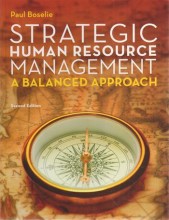Book - Introduction
3 important questions on Book - Introduction
What are the main differences between an episodic change and continuous change?
Regarding analytical framework: change is occasional, vs change is a pattern of endless modification.
Regarding intervention theory: change involves unfreezing, transition changing and refreezing. VS change involves freezing the flux, rebalancing and unfreezing.
Role of change agent: the change agent is a prime mover who creates change. VS change agent is a sense maker who redirects change.
Why is the relation between interactions and interaction premises a) circular/continuous and b) experimental?
This book is focused on zooming in, instead of zooming out. Elaborate on this.
The question on the page originate from the summary of the following study material:
- A unique study and practice tool
- Never study anything twice again
- Get the grades you hope for
- 100% sure, 100% understanding
































